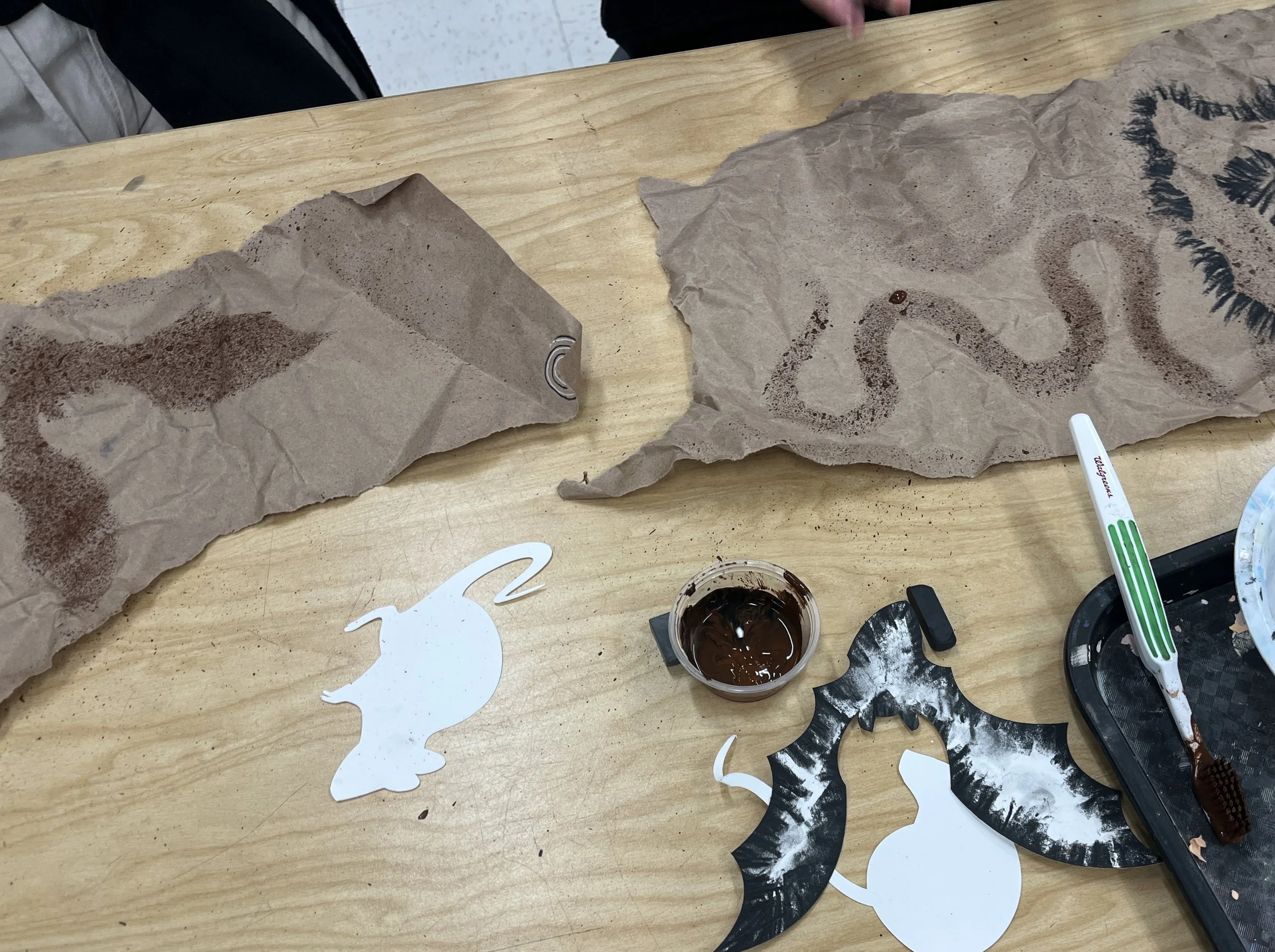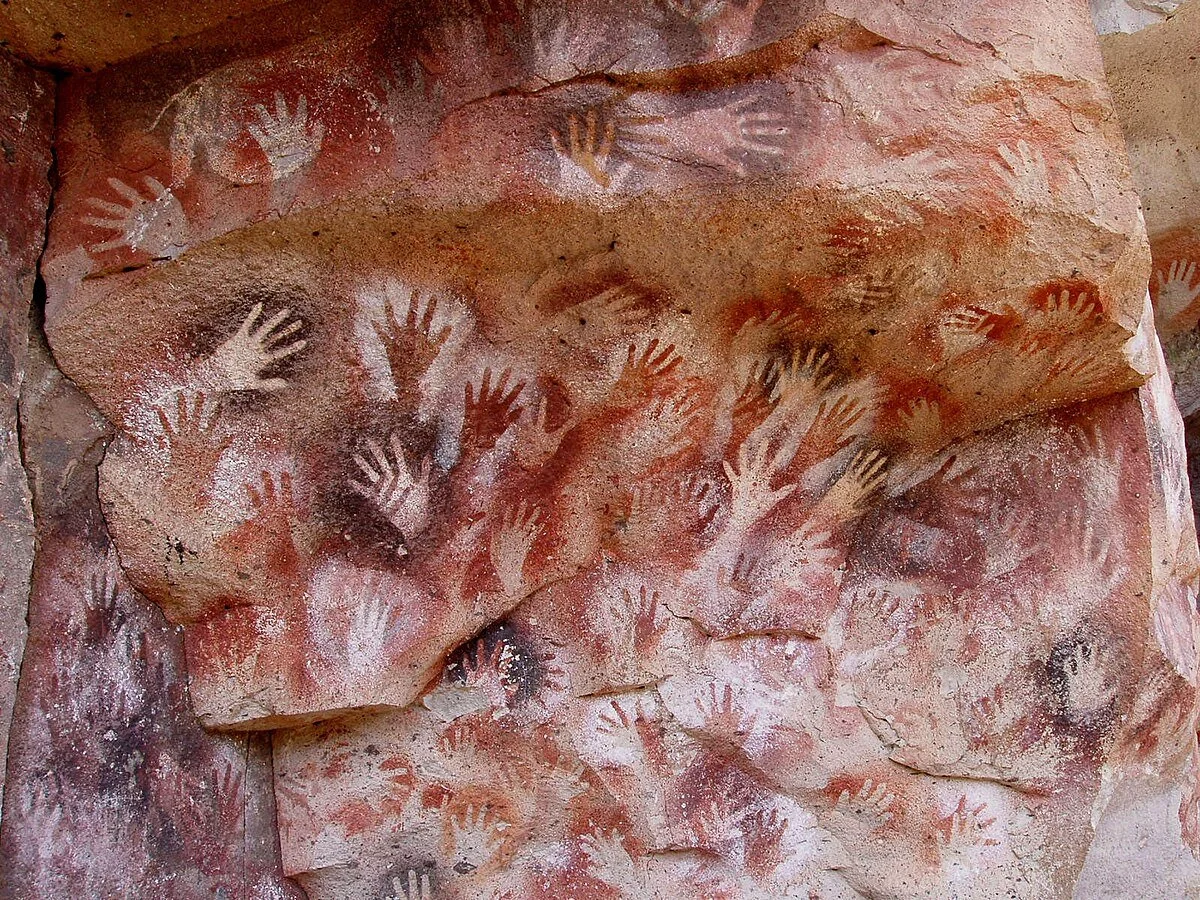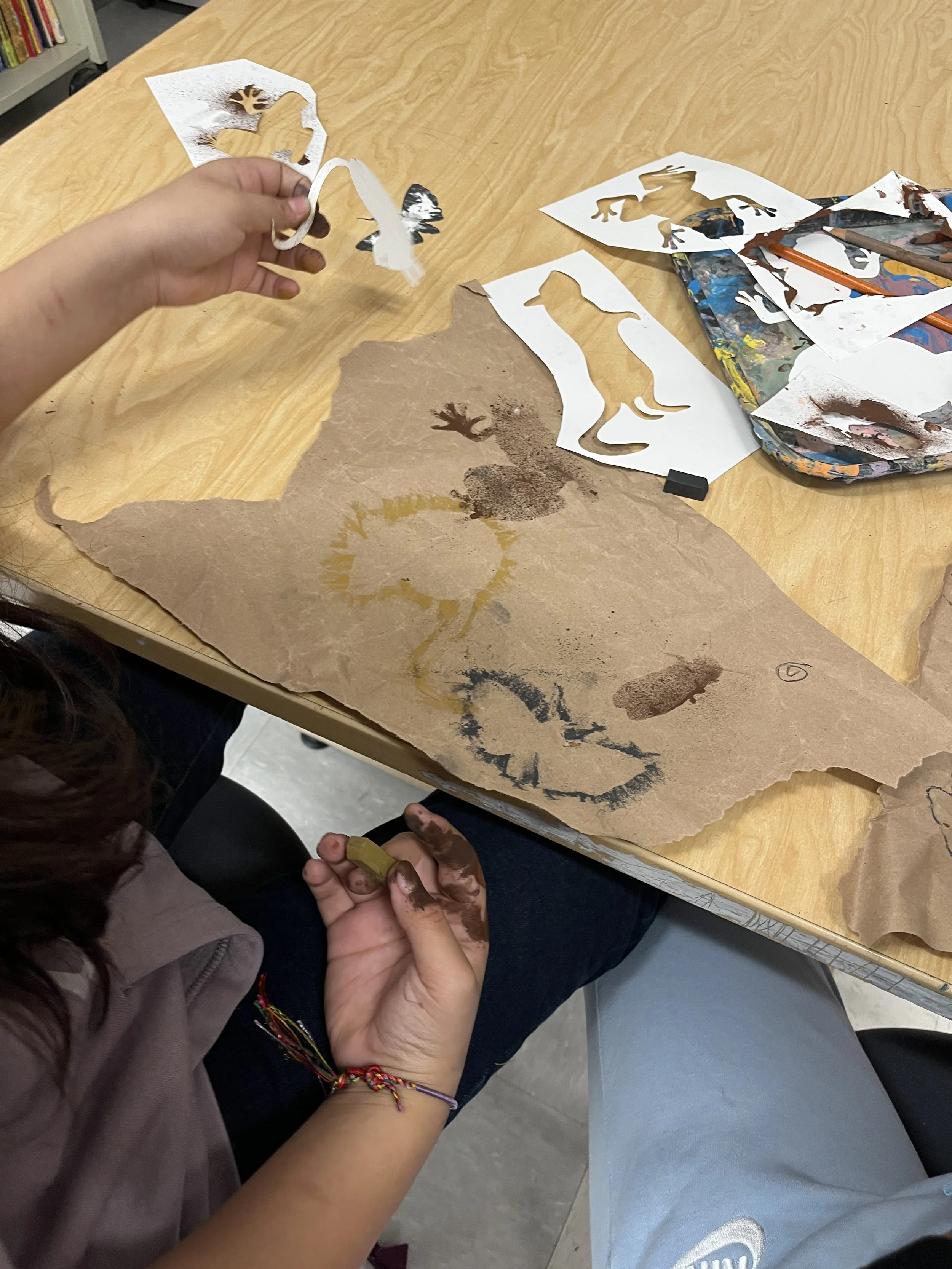7th Grade Pre-historic Art Stencils
My 7th grade art curriculum takes students chronologically from pre-historic art through modern movements. We began this school year by looking at Cuevas de las Manos in Argentina. I find it humbling to imagine the early humans who imprinted their hands on these walls thousands of years ago. The urge to make art and leave a piece of ourselves behind spans our entire evolution as a species.
Students use the Feldman model of art criticism to observe, analyze, interpret and judge historical artworks in a graphic organizer. When I asked for interpretations about this cave art one student guessed that the hands could be a way for a community to preserve a memory. I think so too.
We discussed how early humans used a “spray-painting” method by blowing pigment with bone pipes to stencil hand prints on the walls. I used this method as inspiration to design a project where students used 3 different techniques to create cave art on textured craft paper. I printed stencils of all kinds of cave-dwelling animals on cardstock using a cricut machine. Students were prompted to create narratives with these animals and stenciling techniques.
Students used toothbrushes and small cups of paint to create a “spray-paint” splatter effect.
I also provided black and white chalk pencils for students to add illustrations and details around their animals.
Cuevas de las Manos Source
Students also used chalk pastels to create a “halo” by rubbing the pastels outward from the edges of the animal stencils.
Here is my teaching exemplar employing all 3 techniques.




